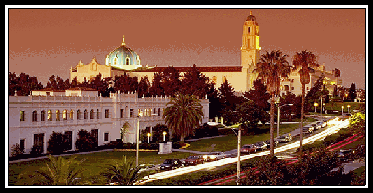
THE ECONOMIC ENVIRONMENT OF BUSINESS
 |
| Spring 2018 |
 |
Graduate (S) Business Administration 509 THE ECONOMIC ENVIRONMENT OF BUSINESS |
|
|
|
| | HOME | SYLLABUS | CALENDAR | ASSIGNMENTS | ABOUT PROF. GIN | |
When calculations are required, you must show all work unless the answer is obvious. The homework is due on Sunday, April 29.
.
1. Consider an industry that has nine firms with the following market shares:
|
25 |
20 | 10 | 10 | 10 | 10 | 5 | 5 | 5 |
a. Calculate the Herfindahl-Hirschman Index for this industry.
b. The second largest firm decides to acquire one of the smallest firms in order to better compete with the largest firm. How will the Department of Justice and the Federal Trade Commission react to the proposed deal?
.
2. Suppose an economy has the following national income data (in US$ billions):
Gross private domestic investment 170 Depreciation expenditures 110 Compensation of employees 580 Personal taxes 70 Net interest 60 Imports 120 Exports 100 Government consumption expenditures and gross investment 200 Income earned, not received 90 Proprietor's income 80 Income received, not earned 130 Rental income 40 Personal consumption expenditures 700 Based on these data, calculate the gross domestic product, national income, corporate profits, personal income, disposable income, and personal saving for this economy.
.
3. Suppose a country produces the following products:
Item 2010 Quantity 2010 Price 2018 Quantity 2018 Price Haircuts 380,000 $10 540,000 $12 Gasoline 3,000,000 $3.00 3,600,000 $3.50 Pizzas 400,000 $13 600,000 $16 a. Calculate the nominal GDP for both 2010 and 2018.
b. Calculate the real GDP for 2018, using 2010 as the base year.
c. Calculate the GDP deflator for 2018, with 2010 as the base year. What is the amount of inflation between 2010 and 2018, according to the GDP deflator?
d. Suppose that, in 2010, the average consumer in this economy consumed 8 haircuts, 720 gallons of gas, and 20 pizzas. In 2018, the average consumer consumed 12 haircuts, 640 gallons of gasoline, and 25 pizzas. Calculate the Consumer Price Index for 2018, using 2010 as the base year.
e. Suppose the Consumer Price Index in 2019 is 120. What is the rate of inflation from 2018 to 2019? Express your answer as a percentage (not a decimal), rounded to one decimal place.
f. Suppose your company borrowed $100,000 through a 8-year loan in 2010. What is the real value of that amount when you repaid it in 2018, based on the Consumer Price Index calculated in (d)?
.
4. Suppose an economy had 33.5 million people employed, 2.6 million unemployed, and 13.7 million not in the workforce. Calculate unemployment rate, the labor force participation rate, and the employment-population ratio in this economy. Express your answer as a percentage (not a decimal), rounded to one decimal place.
.
5. Consider the following data involving trade between the U.S. and Mexico:
Product Domestic Price 29 DEC 2017:
US$1 = 19.663 Pesos6 APR 2018:
US$1 = 18.292 PesosU.S. exports industrial machinery $100,000 (a) (c) Mexico exports agricultural products 1000 Pesos (b) (d) a - d. Fill in the values in the table above.
e. Explain what would happen to U.S. exports of industrial machinery to Mexico and U.S. imports of agricultural products from Mexico as a result of the exchange rate change from the end of the year.
.
6. Suppose the marginal propensity to consume is 0.80, the marginal propensity to invest is 0.10, and the marginal propensity to import is 0.15.
a. Calculate the multiplier in this case.
b. If autonomous investment increases by $200 billion due to increased confidence, what would be the eventual impact on the national income, using the multiplier calculated in (a).
.
7. Suppose the reserve requirement in the U.S. is 0.20. Also suppose that the currency deposit ratio is 0.05 and the excess reserve ratio is 0.10.
a. Calculate the simple deposit multiplier and the money multiplier.
b. Suppose the Fed wanted to decrease the money supply by engaging in $600 million in open market operations. What would it do?
c. Using the money multiplier calculated in (a), how would the money supply ultimately be affected by this action?
d. Suppose the Fed wanted to ultimately increase the money supply by $24 billion. What should it do in terms of open market operations, using the money multiplier calculated in (a)?